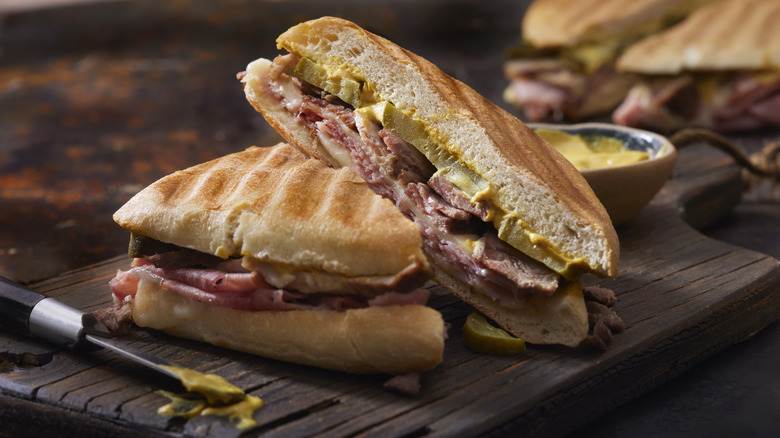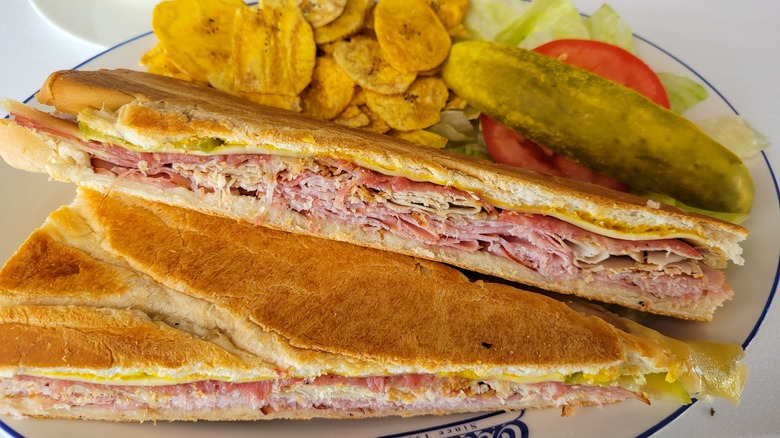Why Cuban Sandwiches Are A Florida Staple
We may receive a commission on purchases made from links.
Though the sandwich's name certainly implies its geographic origins, there has long been debate over the true birthplace of the Cuban sandwich. The researchers and authors behind the 2022 book "The Cuban Sandwich: A History in Layers" set out to chart its history once and for all, and determined that the sandwich did, in fact, originate in Havana, Cuba, as its name suggests — but that it owes its evolution and rise to fame to the state of Florida, which is partially why so many of the best Cuban sandwiches in the U.S. can be found there. The fact that the Cuban sandwich is as much a product of Florida as it is of Cuba itself speaks to the long migratory history between the two locales.
Due to their geographic proximity, travel between Cuba and Florida was common in the late 19th and early 20th centuries. One of the first major waves of emigration occurred in the mid-to-late 1800s, when the tobacco industry brought thousands of Cuban migrants to Key West and Tampa — and with them, the "mixto" sandwich, named for its mix of meats and cheeses, which became the Cuban.
The first known mention of the Cuban sandwich is attributed to The Tampa Tribune in 1906, though it probably differed from the iconic sandwich we know today. That Cuban sandwich, composed of distinctive Cuban bread, mojo pork, Spanish ham, Italian Salami (in Tampa, at least), Swiss cheese, pickles, and mustard, is a product of the intermixing immigrant cultures that define Florida's early history.
Tampa and Miami each claim the Cuban sandwich as their own
While Cuban immigration to Florida occurred in waves throughout the 19th and 20th centuries, by far the largest influx came after the Cuban Revolution in 1959, with the population concentrated in Miami. As a result, Cuban sandwiches became hugely popular in the area by the mid-1960s, and a friendly rivalry between Tampa and Miami over ownership of the sandwich was born.
Both cities have their variations on the sandwich. Most notably, Tampa sandwiches typically include Genoa salami, while Miamians balk at the premise. Their bread differs as well, with Tampa bakeries being more likely to carry on the Cuban tradition of hand-stretching the loaves and adorning them with palmetto leaves. The cultural tradition of both cities, however, means that they both feature an abundance of essential Cuban ingredients like garlic, citrus, and oregano in their cooking, as evidenced in the mojo pork.
Miami was where the use of the iron press (or "plancha") to toast the sandwiches was first introduced, which many diners consider to be a crucial step in the Cuban sandwich-making process. Residents of either city may passionately declare their local Cuban to be the superior sandwich, but no matter where you are, there's nothing like a perfectly formed bite of crusty bread, melted cheese, hearty meats, and tangy pickles.

